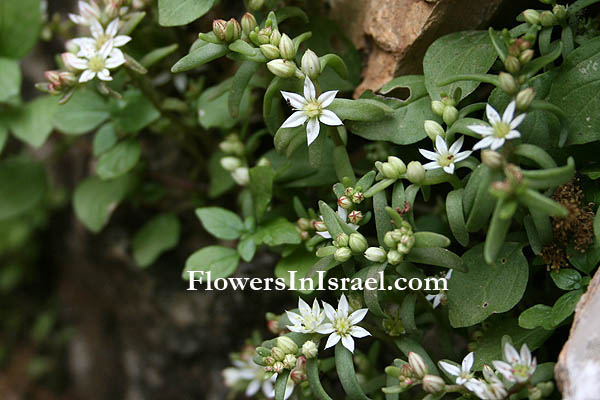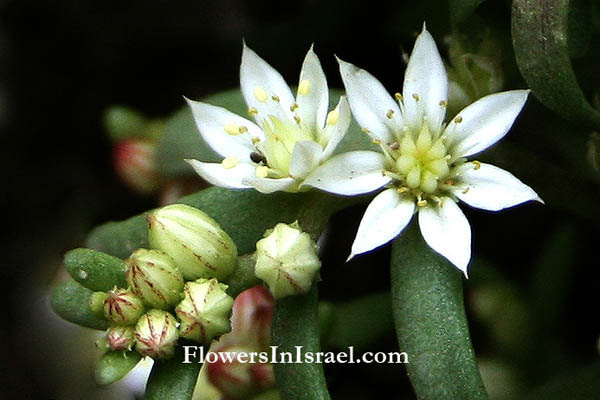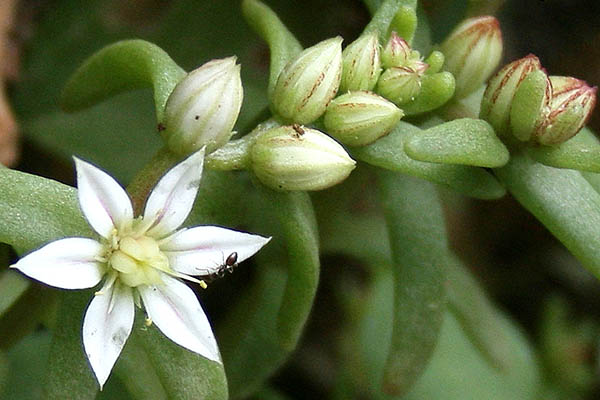Spanish stonecrop,
Hebrew: צורית ספרדית, Arabic: عرف الديك
| Scientific name: | Sedum hispanicum L. | |
| Synonym name: | Pistorinia hispanica (L.) DC., Cotyledon hispanica L. | |
| Common name: | Spanish stonecrop | |
| Hebrew name: | צורית ספרדית | |
| Arabic name: | عرف الديك | |
| Family: | Crassulaceae, Stonecrop Family, טבוריתיים |

|
| Life form: | Annual | |
| Stems: | 5-20 cm high, erect, usually branching from base, glandular-pubescent | |
| Leaves: | Alternate, cylindrical or tetete, succulent | |
| Flowers: | Hermaphrodite, six-petaled, star-shaped, white | |
| Fruits / pods: | Follicles, seeds elliptic-obovate, apex obtuse or papillate, base usually obtuse; surface longitudinal ribbed, ribs crenate, barely lustrous, brown | |
| Flowering Period: | February, March, April, May | |
| Habitat: | Hard rock outcrops | |
| Distribution: | Mediterranean Woodlands and Shrublands, Semi-steppe shrublands | |
| Chorotype: | Med - Euro-Siberian | |
| Summer shedding: | Ephemeral |

Derivation of the botanical name: Sedum, Latin sedo, "to sit," in reference to the manner in which some species attach themselves to stones or walls. hispanicum, Spanish. Pistorinia, for Jacobo (Jaime or Santiago) Pistorini (fl. 1766 - 1775), a Spanish physician of Italian origin, physician in ordinary of King Carlos III. Cotyledon, Greek kotylēdṓn, kotýlē, cotule, cup, a cuplike hollow, a cavity, from the cup-like leaves of some species. The Hebrew name: צורית, zurit, tzurit, for sedum, stonecrop.

|